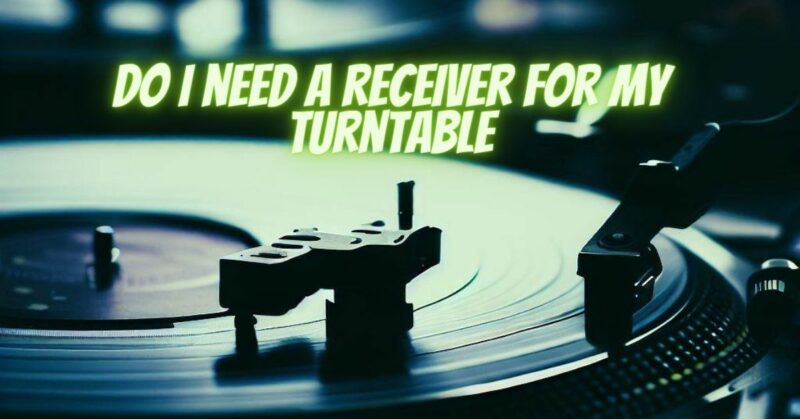When setting up a turntable, one common question that arises is whether a receiver is necessary. While a receiver can offer several benefits and functionalities, its requirement depends on various factors, including the specific setup, desired audio quality, and intended usage. In this article, we will explore the need for a receiver with your turntable, helping you make an informed decision for your audio setup.
- Amplification: One primary function of a receiver is to amplify the audio signal from your turntable. Turntables produce a low-level signal that needs to be boosted to line level (standard audio signal level) for proper playback through speakers. If your turntable has a built-in preamp, it can amplify the signal, eliminating the need for a separate receiver. However, turntables without built-in preamps require external amplification.
- Speaker Connectivity: A receiver provides multiple outputs to connect speakers, allowing you to create a stereo or surround sound setup. If you wish to connect passive speakers (those without built-in amplification) to your turntable, you will need a receiver to power them. Passive speakers require an external power source, which the receiver provides.
- Source Switching and Additional Inputs: A receiver offers the convenience of source switching and multiple inputs. If you plan to connect multiple audio sources (such as a CD player, streaming device, or gaming console) to your audio system, a receiver allows you to switch between these sources effortlessly. It provides various input options, ensuring flexibility and accommodating a range of audio devices.
- Equalization and Tone Controls: Some receivers feature built-in equalization and tone controls, allowing you to adjust the audio output according to your preferences. These controls can enhance the sound quality, fine-tuning bass, treble, and other frequency ranges. If you desire more control over the audio characteristics, a receiver with equalization and tone control options may be beneficial.
- Power and Audio Quality: Receivers typically offer more power compared to built-in preamps or standalone phono preamps. This extra power can drive speakers more effectively, resulting in better sound quality, dynamics, and overall performance. If you seek a higher audio output and a more immersive listening experience, a receiver can provide the necessary amplification.
- Future Expandability: Consider your future plans for audio expansion and upgrades. If you anticipate adding more audio components, such as a CD player, cassette deck, or additional speakers, a receiver offers the advantage of accommodating these additions. It provides the necessary connections and amplification for a comprehensive audio system.
Conclusion:
The need for a receiver with your turntable depends on several factors, including the presence of a built-in preamp, speaker requirements, desired audio quality, source switching capabilities, and future expansion plans. If your turntable has a built-in preamp and you only intend to use powered speakers, a receiver may not be necessary. However, if you prefer passive speakers, desire additional audio inputs, require tone control options, or seek higher audio quality and expandability, a receiver can be a valuable addition to your setup. Assess your specific needs and preferences to determine whether a receiver is essential for achieving your desired audio experience.


